The silhouette of Gjirokastër began to emerge in the distance. This city is in the country’s mountainous south, overlooked by its ancient fort, with 17th- and 18th-century stone Ottoman houses cascading down the slopes like a medieval mirage.
We turned off the highway on to a road dominated by an eight-storey concrete building with pink balconies, beneath which locals sat in the sun sipping coffee on lime-coloured patio furniture.
“This is Gjirokastër,” Idar, my Albanian friend from England, announced with a degree of triumph.
“Yes, it is, but you know I have come to find Ergiri!” I joked.
Ergiri was the Ottoman name for Gjirokastër when the Muslim empire ruled this part of Albania between 1417 and 1913. It was in the middle of this period that my literary companion for this journey, the 17th-century Ottoman traveller Evliya Çelebi, came to Ergiri.
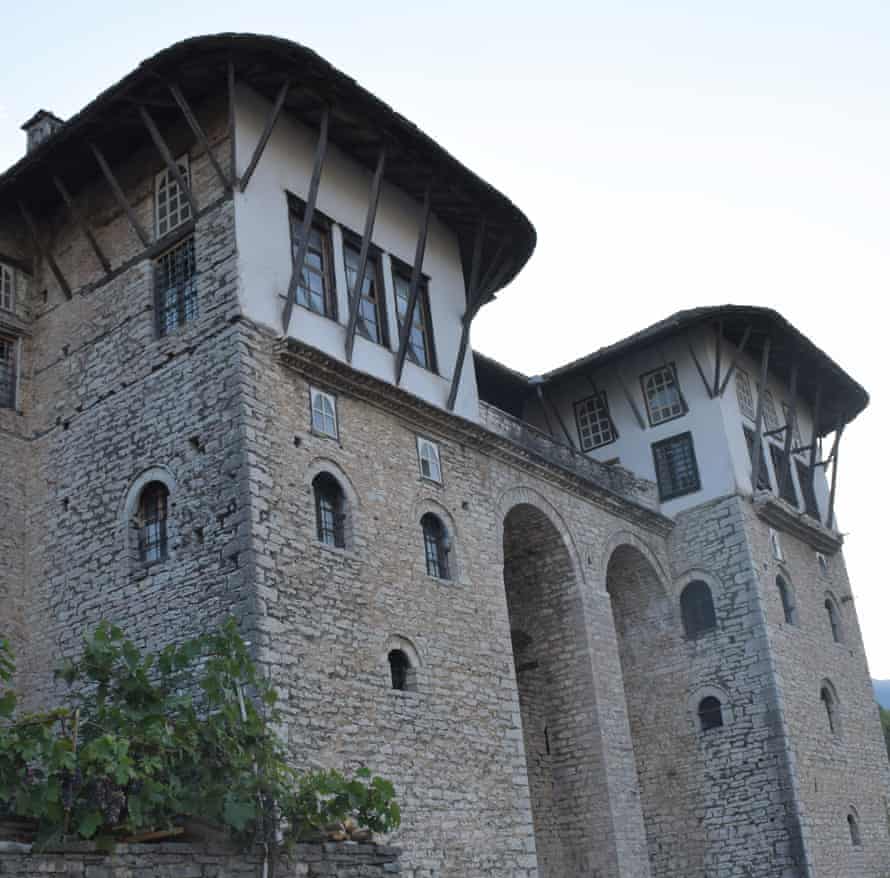
Albania’s popular image today is built on the negative representations by early 20th-century white western travellers such as Edith Durham, who called Albanias “lawless”, and Rose Wilder Lane, who said Albanians were “living in the childhood of the Aryan race” – meaning they were behind her in the evolutionary process. These stereotypes have been reinforced by modern popular culture. In Hollywood’s Taken trilogy, Albania is reduced to the abode of ruthless, violent human traffickers, and the only reference to their faith that I can recall is when they are seen swearing by Allah to avenge their son’s death by killing the film’s white American hero. I remember no other representation of Islam in Albania in the entire movie.
I had read numerous works on the Balkans, but none acknowledged the region’s Muslim culture the way Evliya did. Without his translated works, Idar and I would never have known just how Muslim Gjirokastër had once been. It was clearly no longer a place where people were “addicted to prayer”. Earlier we had heard the adhan from the town’s solitary mosque, but no one rushed to get to the prayers, nor was there any remainder of the numerous institutes of Islamic education Ergiri had once been famed for.
Evliya’s translated works offer one of the only Muslim perspectives on Muslim Europe – one that embraces the culture and heritage as its own and not something foreign, alien or inferior.
All other travel writing on the region in the English language had been authored by those from the same narrow demographic: white, western, privileged, Christian and, more worryingly, of the colonial classes. These were people travelling either for the purposes of colonising a place or part of the class of people doing so. They viewed the world from a lofty position where they felt themselves superior by default. Yet their writings were often presented as romantic wanderings and were heavily relied upon by many later travel writers for socio-historical context. This is the literary heritage of modern travel writing.
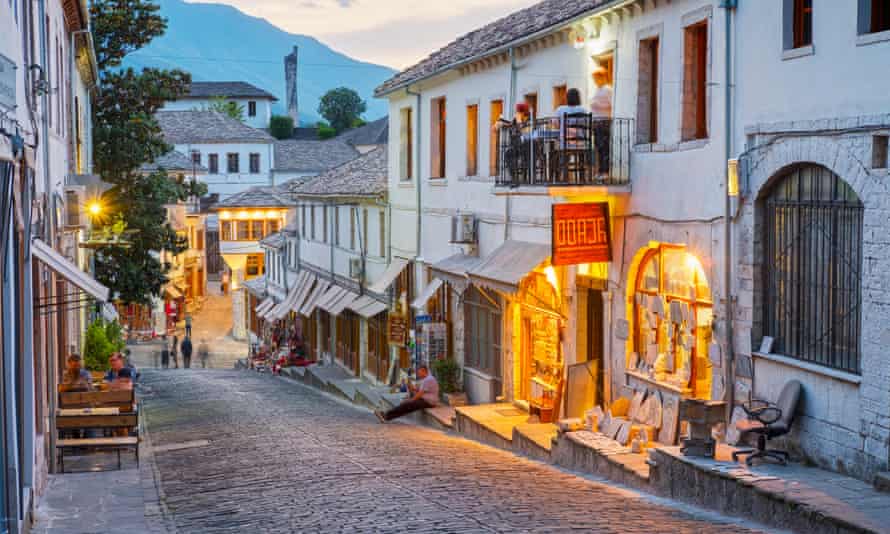
I’d come to Gjirokastër as part of a family road trip to seek out Europe’s living indigenous Muslim presence and to follow in Evliya’s footsteps. I was hoping to see this part of the continent as he did, when it really was Muslim Europe – under Ottoman rule at the height of the empire’s powers.
The trip would become the premise for my new book. I’d travelled with my family from London to start the journey in Sarajevo, capital of Bosnia-Herzegovina. So far, we had visited Muslim communities in Serbia, Kosovo and North Macedonia, marvelling at their history and the wealth of their heritage. After Albania, we would head to Montenegro before making our way back to Sarajevo.
Today, while my wife and two daughters were lying on a beach in Vlore, Idar’s home town, he was helping me follow in the footsteps of Evliya.
In his great, 10-volume Book of Travels, or Seyâhatnâme, Evliya described Gjirokastër as a beautiful open town, spread across eight hills and valleys overlooked by the fortress, a place where slate-roofed stone houses had vineyards and gardens surrounded by white granite walls.
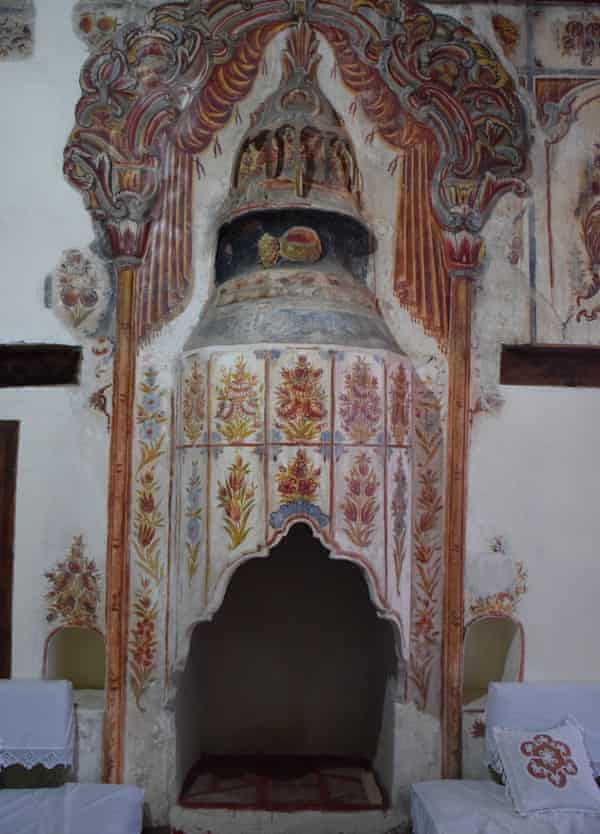
As our rented white Megane struggled up the steep cobbled roads of the “city of stone”, Idar was staring out of the window openmouthed, admiring the Ottoman houses scattered over the hillside. Gjirokastër still clearly had the charm of Evliya’s Ergiri, for this was the longest he had gone without taking a drag on a cigarette.
We were heading for the town’s original Ottoman bazaar area, rebuilt in the 19th century. This was the prettiest of all the neighbourhoods, overlooked by Ergiri’s only surviving mosque still in use, the Memi Bey or Bazaar Mosque.
In Evliya’s day, the town was a deeply religious place. Home to at least 15 mosques, Ergiri was where would-be Islamic scholars of Hadith (traditions of the Prophet) came to train at one of the three madrasas that specialised in this field. There were also tekkes (lodges) for three different Sufi orders and four shrines to Muslim saints. Sadly, all this was destroyed when Enver Hoxha, the locally born communist dictator, ruled Albania. The Memi Bey escaped this fate because it was listed as a cultural monument.
The wheels of the car were starting to slip and I was thankful when we turned a corner and the thick minaret of the mosque came into view, towering over us. After we parked in its shade, I looked up at the circular balcony that breaks up its pencil-like shape, noting its fractal, honeycomb-like muqarnas pattern. Two symmetrical sets of stairs led up to the main courtyard.
To the left is one of the bazaar’s original lanes. Once the bustling heart of a medieval market, today it is lined with shops selling fridge magnets, Gjirokastër T-shirts and miniature models of the town’s fort. A handful of tourists milled around inside, their silhouettes framed by the climbing bougainvillea the owners had trained over the tops of their stores-cum-houses.
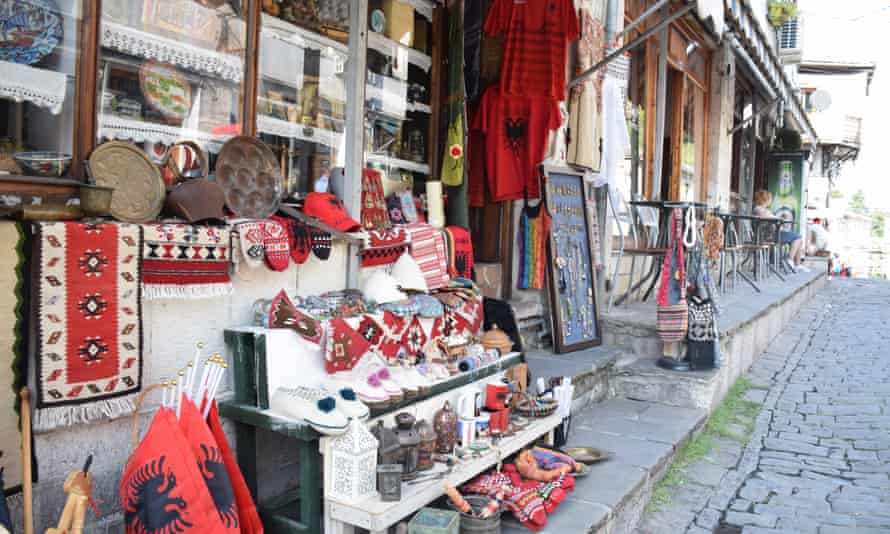
Gjirokastër was easily the most beautiful place I had visited in Albania and I could see why even Hoxha declared it one of only two “museum towns”. The other was Berat, 100km to the north: it too is an ode to classical Ottoman architecture and the only other historic town not subjected fully to the communist version of modernisation that saw mosques, synagogues, churches, Sufi lodges and monasteries closed and torn down, along with many other monuments. These were replaced with the stark, functional buildings that are the hallmark of communist architecture. With such destruction of its overt Muslim identity, Gjirokastër today shows few signs of its former life as a Balkan centre of Islamic scholarship and Sufism, a place where students of theology and spirituality from across the Muslim world came to study – although thankfully both Gjirokastër and Berat’s old towns are now Unesco-protected.
We got a better feel for its history when we climbed up to the fort. Gjirokastër really is a very handsome town, and as Idar and I leaned on the stone walls, as much to catch our breath as anything else, we stared out in silence over a scene that still looked like it belonged in the pages of Evliya’s books. I could see the many gardens, vineyards and “magnificent townhouses” he had described, maybe even while standing on this very spot, framed by green hills and valleys. The only missing places were the numerous Muslim buildings and monuments he reels off in his Book of Travels: the Mosque of Hizir Aga with its stonework minaret; the Mosque of Hadji Murad, with its fountain of sweet-tasting water; the Halveti lodge, where Evliya had to bury one of the boys in his retinue; the many khans (guesthouses), fountains and madrasas, all gone.
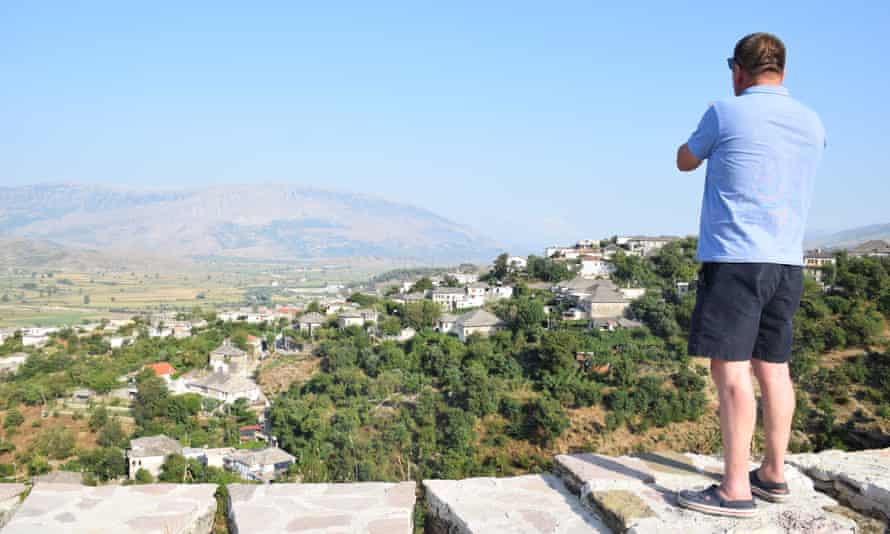
“I didn’t know there is a place like this in Albania, Tharik,” Idar said after a while. I could see he was quite emotional.
Idar had been born in Albania during Hoxha’s rule, a time when observing any faith could get you killed. This was the reason he had never been privy to the country’s Muslim heritage. Standing on that fort looking out over Evliya’s Ergiri, he clearly felt a loss. I did too.
Albania was not a place where I expected to discover stunning historic Ottoman towns that were once centres of Islamic knowledge. Nor, it seemed, had Idar.
Albania is one of three European countries, along with Bosnia-Herzegovina and Kosovo, with Muslim-majority populations, and these countries were central to my road trip in search of the continent’s living indigenous Muslim heritage – our Muslim heritage. Having Evliya by my side helped me better appreciate Albania’s rich Islamic past, and reading his description of its people made me realise something else: the continued demonising of this beautiful nation and its inhabitants is the result of a white, non-Muslim European literary phenomenon, one Evliya helped me avoid repeating.
Minarets in the Mountains: A Journey into Muslim Europe by Tharik Hussain (Bradt Guides £9.99) is out now, also available at guardianbookshop.com





